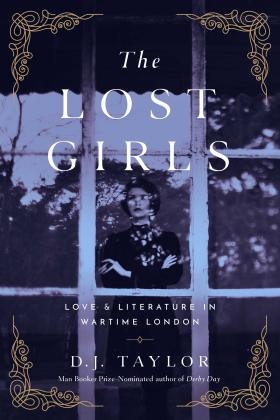The Lost Girls by D.J. Taylor

The Lost Girls is the story of four women: Lys Lubbock, Sonia Brownell, Barbara Skelton and Janetta Parlade, united by their relationship with the literary magazine Horizon and its magnetic director Cyril Connolly in the 1940s. D. J. Taylor opens a window to the lives of these women relegated for decades to the background or to total ostracism, despite having lived with some of the most relevant writers and artists of the time, who did not choose their company just for their beauty and elegance. George Orwell, Anthony Powell, Lucian Freud and Cecil Beaton are some of the big names that were counted among their friends and lovers.
These women, with a spirit too free for their time, strove to maintain control over their present and future, putting it before the security of a long and boring marriage. Their strong presence made them the true reflection of characters created by George Orwell, Evelyn Waugh or Nancy Mitford. But when reading about their travels in the Mediterranean, it is inevitable to think of others like Lawrence Durrell. Did Durrell and Barbara Skelton get to know each other in their Egyptian wanderings? There is something of Justine in that woman capable of spending her honeymoon with Connolly tucked into King Farouk’s bed.
Throughout the book, Taylor insists on vindicating these women especially in front of Connolly. Cyril seems a monster capable of consuming women who dared to approach him and then discard them or forget them with uneven effect. From the desperate Lys to the charismatic Barbara, through the elusive Janetta, they all fell prey at some point to the boring office tasks at Horizon. The most interesting case is that of Sonia, who would end up marrying George Orwell. The letters demonstrate how, in just a few years, she became the actual publisher of Horizon, given Connolly’s complete abandonment of his duties. She would eventually become known as the last wife of George Orwell, when she was the de facto editor at the most prestigious literary magazine of the time. We will not find her name on the London plaques that recall the headquarters of the magazine.
Beyond the affairs and influential relationships, Taylor’s choral biography succeeds at showing this historical moment—often written about—from the perspective of a little-known group of women. They lived on the edge but with both hands stretched out towards who, even today, awaken the minds of those of us who continue reading them, looking at them. Living that moment was, from an intellectual point of view and at best, what they chose to do.
